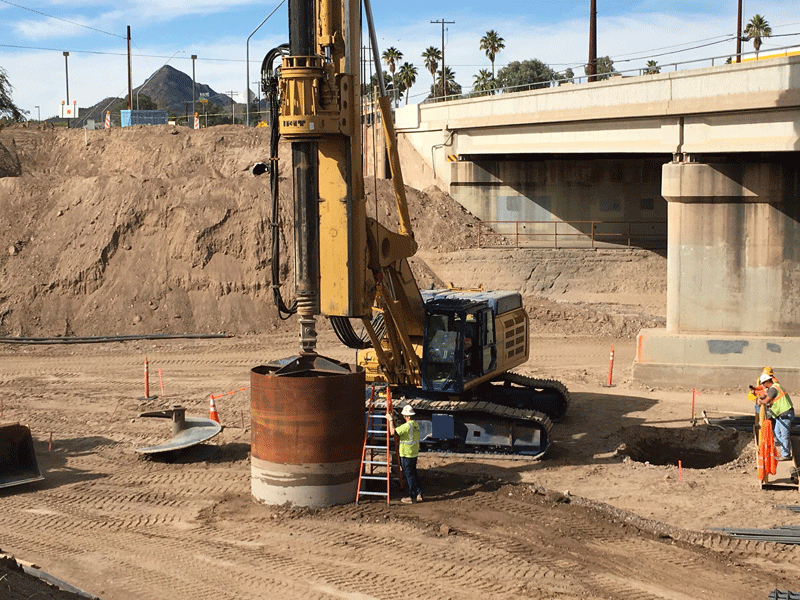Bridge piers are like icebergs: There's more than you think below the surface
Bridge piers are like icebergs: There's more than you think below the surface

Every time you drive by an overpass, you see the cement-and-steel columns that support the roadway. There could be only a few on a small overpass, or more than a dozen in larger overpasses like the ones at two current projects on Interstate 10 in Pinal County. They usually hold the overpass 15-20 feet above what's below.
What you don’t see is just how low they go.
A typical bridge column drops down about 80 feet underground – about the height of an eight-story building.
Each pier includes a cylinder of rebar steel about 6-8 feet in diameter, woven into a lattice that creates hundreds of squares no more than 1 foot across. Each of those squares is tied together – by hand – to strengthen the concrete that is poured on top to create what's known as a caisson (this 2011 video shows the process).
Why so deep? Friction.
The bridge columns are in place not only to hold the overpass up but to keep it steady. It’s essential that each overpass be held firmly in place. The deep columns create friction with the surrounding ground, preventing the bridge from moving despite thousands of vehicles crossing a typical overpass every day, and weather bringing rain and crosswinds. Combine 10 or more columns and the friction is enough to hold a bridge steady for decades.
Overpasses like the ones being built today in places like Maricopa and Tucson are built to last 50 years or more. One way to make sure they serve that long is to give them a good foundation. By digging so deep, ADOT is doing just that.
